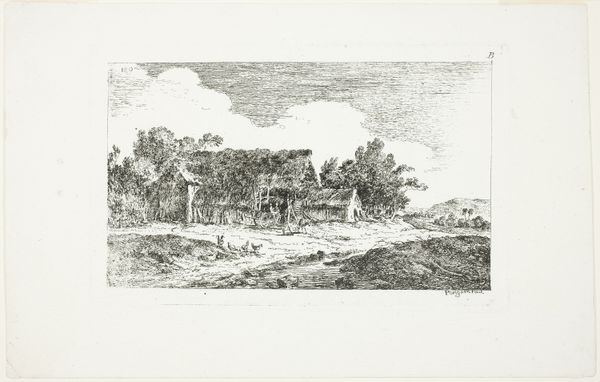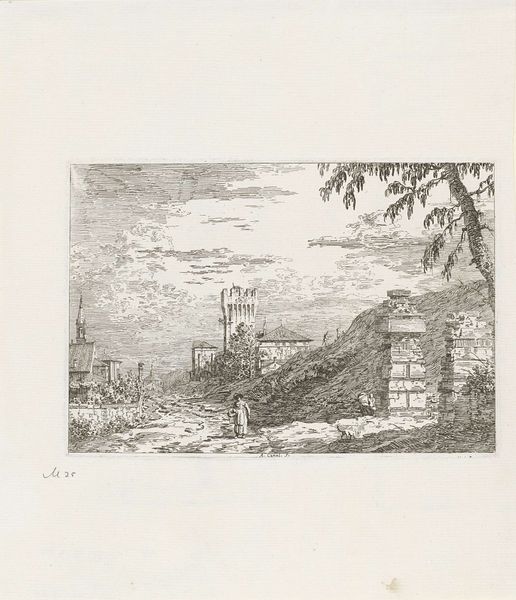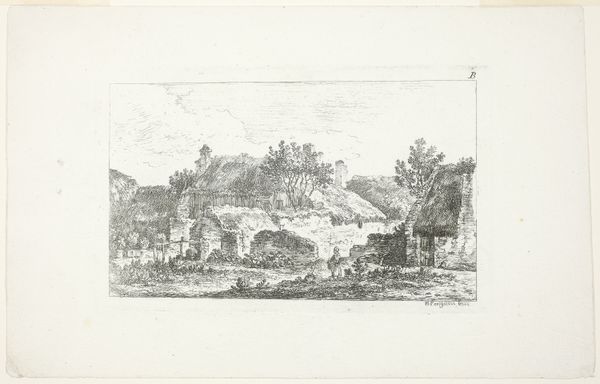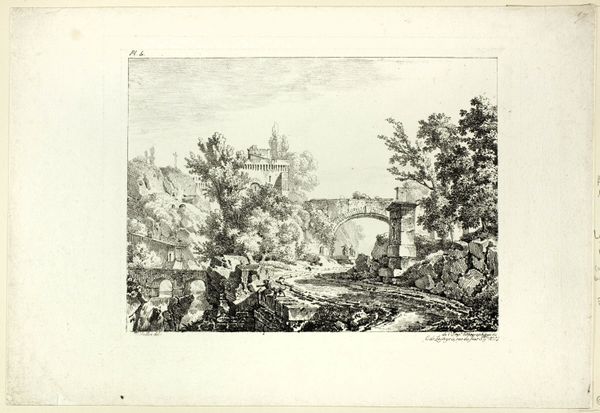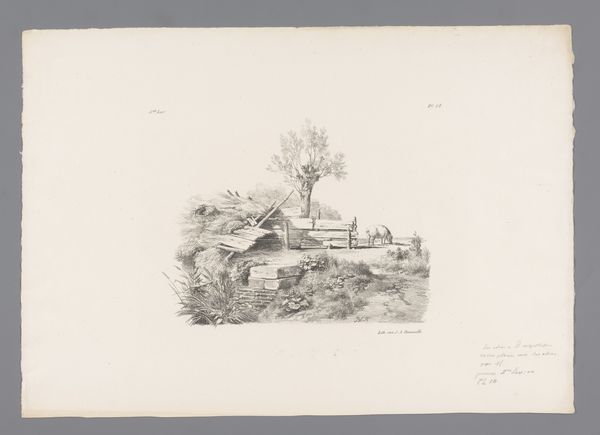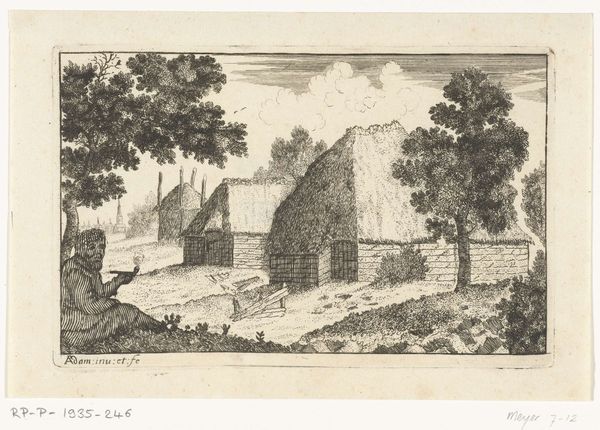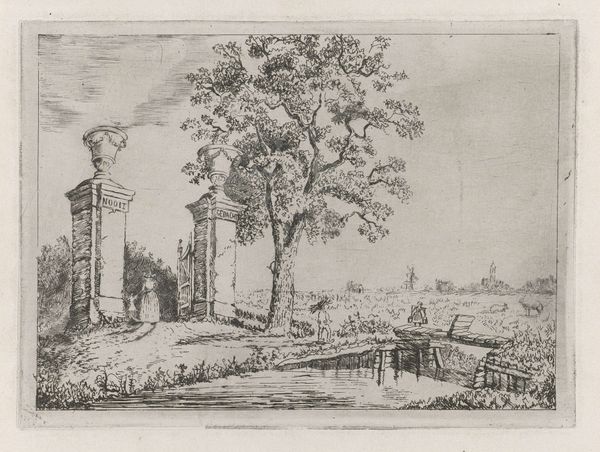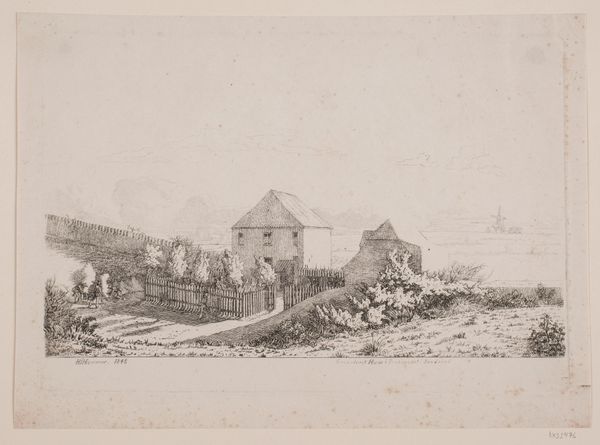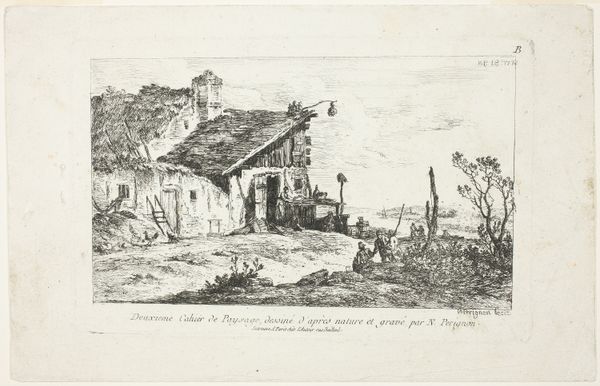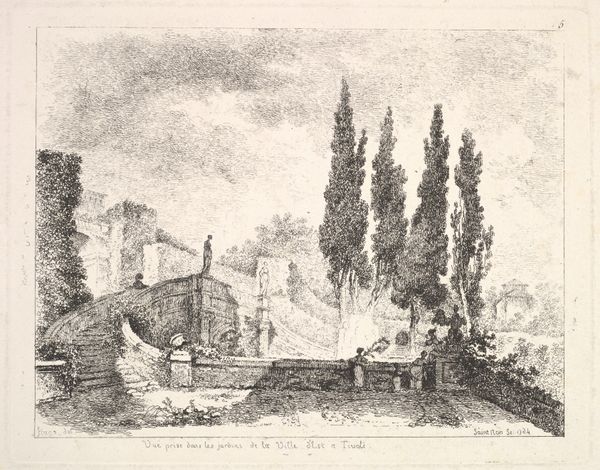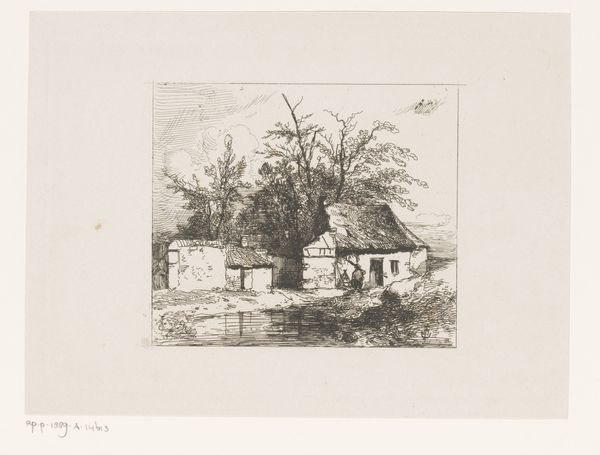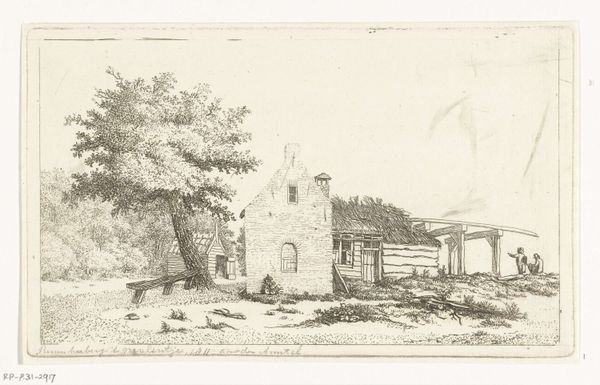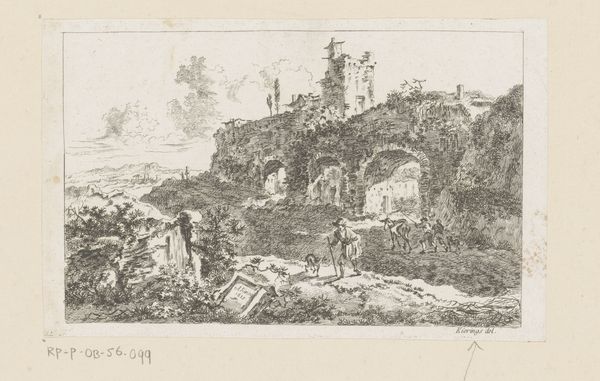
drawing, lithograph, print, paper, ink
#
drawing
#
lithograph
# print
#
landscape
#
paper
#
form
#
ink
#
romanticism
#
line
#
realism
Dimensions: 193 × 258 mm (image); 270 × 359 mm (sheet)
Copyright: Public Domain
Curator: Here we have Achille Etna Michallon's "Landscape with Bridge," a lithograph rendered in ink on paper from 1817. It’s currently held in the collection of The Art Institute of Chicago. Editor: The mood is instantly melancholic for me. The crumbling architecture set against the soft, blurry landscape really evokes a feeling of transience. Curator: It does carry that air of romantic ruin, doesn’t it? The bridge, with its broken arches, acts as a potent symbol. A broken link or transition…perhaps reflecting on the instability following the Napoleonic era? Editor: Precisely. It isn't merely an architectural study; it's about societal fissures. The cross atop the bridge... It hints at the Church's enduring presence, but placed on dilapidated stonework, does it suggest resilience, or perhaps a past its prime? Curator: A superb observation. That cross pulls double duty, linking earthly decay with enduring spiritual presence. Remember, Romanticism often grappled with these dualities—the temporal versus the eternal. Michallon was likely exploring how these played out in post-revolutionary France. Editor: It's all about tension, I agree. The meticulously rendered stonework in the foreground contrasts so sharply with the indistinct background, suggesting a push-pull between the known and unknown, the familiar past, and an uncertain future. Curator: Michallon’s artistic approach—a confluence of realism in detail and romantic idealism in composition—makes his early landscapes very revealing documents of a culture trying to piece itself together, stone by stone. Editor: A nation rebuilding literally and figuratively. Art’s capacity to hold and reflect those transformations continues to fascinate. I see the bridge itself almost as a metaphor of history and how society reflects on change, loss, and survival. Curator: Thank you for that. Examining this bridge with you has illuminated much more than simply aesthetic style but cultural persistence itself. Editor: And it reminds me that the physical ruins of one era can, through art, give foundations to entirely new symbolic structures for those who follow.
Comments
No comments
Be the first to comment and join the conversation on the ultimate creative platform.
